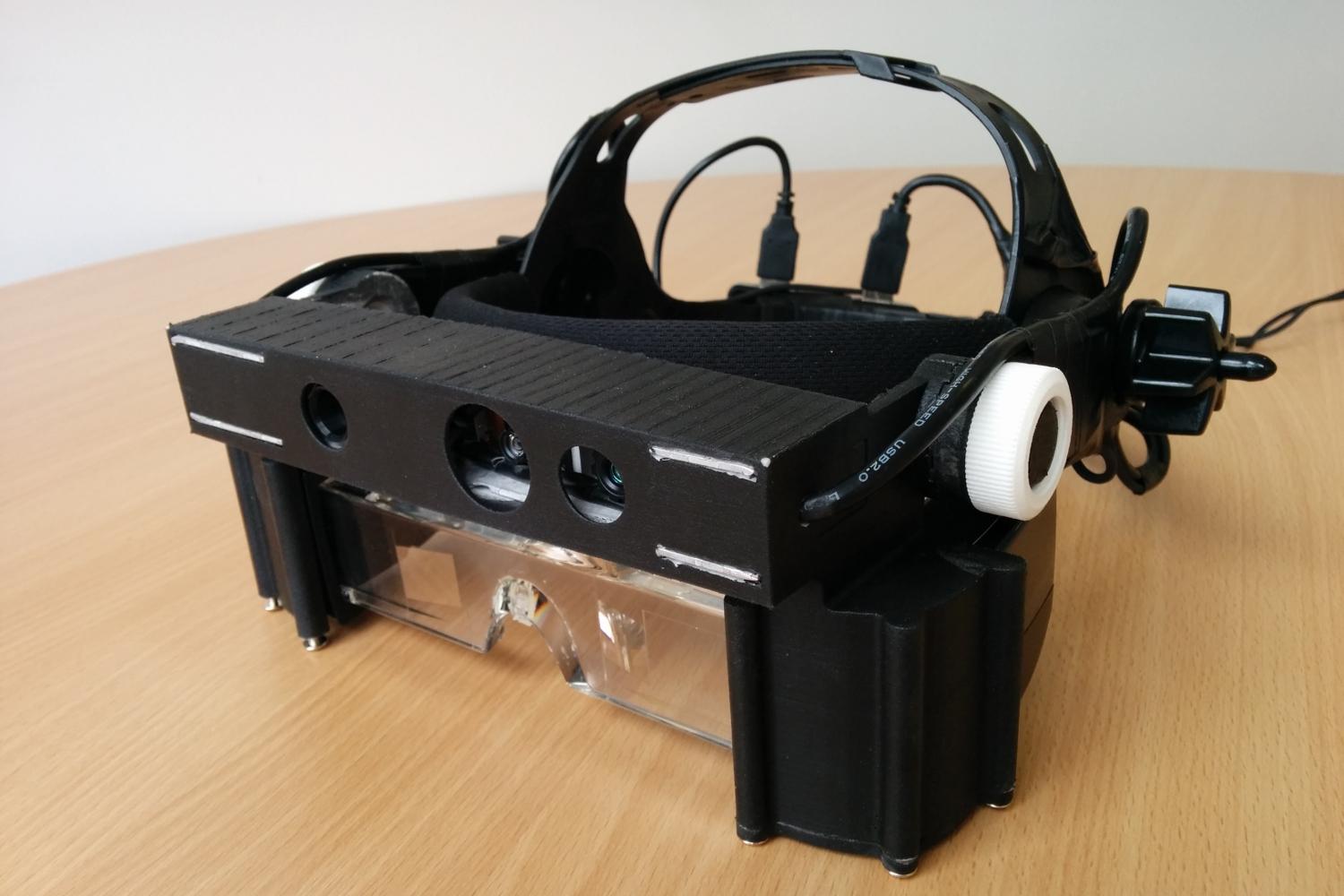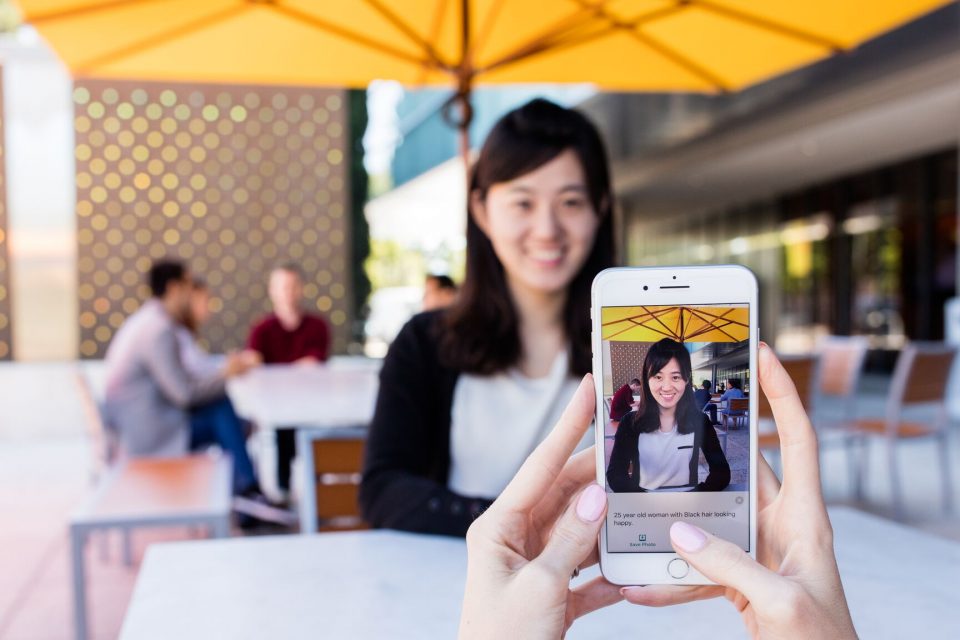Braille Displays and Notetakers: Must-Have Tools for Learning and Work
Braille Displays and Notetakers: Must-Have Tools for Learning and Work
Blog Article
Discover Cutting-edge Tools Made for the Aesthetically Damaged
The development of ingenious devices for the aesthetically damaged stands for a considerable advancement in ease of access and freedom. Technologies such as wise glasses with AI abilities and mobile applications developed to supply auditory descriptions are improving daily experiences for users. Furthermore, wearable gadgets that use haptic feedback boost environmental recognition, while modern-day Braille innovations provide brand-new means to engage with text. As these tools remain to evolve, their effect on the lives of those with visual impairments increases important concerns regarding the future of inclusivity and freedom in various elements of life. What exists in advance in this technological landscape?
Smart Glasses for Navigating

Smart glasses designed for navigating are transforming the method visually damaged people interact with their environment. These sophisticated tools use a combination of video camera technology, expert system, and acoustic feedback to provide real-time info about surroundings. By utilizing barrier detection systems, clever glasses can inform users to possible hazards, making it possible for more secure mobility in both unfamiliar and familiar settings.
The integration of GPS technology further boosts navigating abilities, enabling users to get auditory instructions as they move. This hands-free technique not just cultivates self-reliance yet also encourages aesthetically damaged people to browse city landscapes with increased self-confidence. In addition, numerous wise glasses are furnished with functions that recognize landmarks and road indicators, supplying contextual info that boosts the individual experience.
Additionally, the advancement of these tools is continually advancing, with firms functioning to enhance the precision of things acknowledgment and expand the series of navigational features. As clever glasses come to be a lot more available and affordable, they hold the prospective to significantly transform daily life for aesthetically impaired individuals. Ultimately, these cutting-edge devices represent an important step towards inclusivity, offering improved flexibility and a better feeling of autonomy for people navigating the globe around them.

Mobile Application for Daily Living
Exactly how can mobile applications enhance the day-to-day lives of visually impaired individuals? Mobile applications are revolutionizing the method visually impaired users navigate their atmospheres, take care of day-to-day jobs, and access info. These applications provide vital support with different capabilities, promoting freedom and boosting lifestyle.
Numerous ingenious mobile apps are created specifically for daily living. Applications like Be My Eyes connect visually damaged users with sighted volunteers by means of video calls, enabling them to obtain real-time support with jobs such as checking out labels or browsing unfamiliar areas. Similarly, Seeing AI, created by Microsoft, utilizes expert system to describe surroundings, checked out message, and identify items, effectively changing a smartphone into a powerful device for day-to-day help.
Additionally, navigating applications customized for the visually damaged, such as Aira and BlindSquare, offer audio-based instructions and ecological details, making it possible for customers to traverse their surroundings securely and with confidence. Past navigating and immediate support, mobile applications likewise support company and task administration, with functions that aid individuals establish suggestions, create to-do lists, and track appointments. In summary, mobile applications act as vital sources, equipping visually impaired individuals to lead even more independent and satisfying lives.
Wearable Technologies for Support
Empowerment through innovation is increasingly obvious in the realm of wearable devices designed to aid aesthetically impaired individuals. These innovative tools incorporate seamlessly right into life, boosting navigation and providing important responses to customers. For example, clever glasses geared up with cams can recognize faces and read text aloud, permitting users to communicate even more with confidence in professional and social settings.
An additional notable advancement is using haptic responses systems in wearable devices. These systems make use of vibrations or other tactile signals to share details concerning the customer's atmosphere, such as challenges or modifications in surface, boosting mobility and safety and security. Wearable technologies additionally consist of wristbands that connect to mobile phones, notifying customers to alerts via subtle vibrations, therefore enhancing connectivity without dependence on aesthetic signs.
As these technologies continue to evolve, they are not just boosting independence for visually damaged individuals however also promoting a better feeling of inclusion in culture. By bridging the gap between obstacles dealt with in everyday living and the capacity for freedom, wearable technologies serve as pivotal tools in the quest for equal rights and empowerment for those with visual problems.
Audio Description Tools
Audio description devices play a crucial function in improving accessibility for visually impaired people, offering them with the ability to involve with aesthetic media. OCR devices for the blind. These tools use narrated summaries of vital aesthetic components in movies, television programs, and live performances, ensuring that customers can totally comprehend the context and emotions conveyed through visuals
Sound description can be incorporated into different platforms, consisting of streaming services, cinema screenings, and live cinema. Numerous preferred streaming solutions now consist of audio description as an ease of access function, allowing viewers to select it easily. Along with traditional media, specialized applications also exist, giving audio descriptions for art exhibitions, galleries, and other social events.
The performance of audio summary depends upon the ability of the storytellers, who should communicate aesthetic details succinctly without diminishing the original sound. Advancements in this field are also paving the method for even more individualized experiences, where individuals can change the level of information and pacing according to their choices.
Braille Innovations and Devices
Braille advancements and tools have significantly changed the way aesthetically impaired individuals engage with message and information. Modern innovations have led to the development of flexible devices that boost literacy and self-reliance amongst customers.
Additionally, mobile Braille notetakers incorporate traditional Braille input with contemporary performances, assisting in note-taking, scheduling, and paper editing and enhancing on the move. Mobility aids for visually impaired users. These compact devices usually include text-to-speech capacities, linking the gap in between Braille and acoustic info
In enhancement, innovative Braille printers have arised, allowing customers to generate Braille labels, records, and educational products successfully. This ease of access fosters better involvement in instructional and specialist environments, inevitably advertising inclusivity.
Moreover, research study right into smart Braille modern technologies remains to broaden. Gadgets that include expert system are being checked out to give real-time navigating support and contextual details, improving the customer experience in diverse settings. In general, these innovations mirror a dedication to encouraging aesthetically impaired individuals via innovation, Screen readers for the blind ensuring they can conveniently gain access to and involve with the world around them.

Verdict
The development of innovative devices for the aesthetically damaged significantly enhances freedom and top quality of life. These modern technologies not only foster better inclusion yet additionally advertise autonomy in day-to-day activities, ultimately contributing to a more available and fair society for aesthetically impaired people.
As smart glasses end up being a lot more easily accessible and economical, they hold the possible to significantly transform daily life for aesthetically impaired customers. Mobile applications are revolutionizing the way aesthetically damaged customers navigate their settings, manage daily tasks, and gain access to info. Applications like Be My Eyes attach visually impaired individuals with sighted volunteers through video clip phone calls, allowing them to receive real-time support with tasks such as checking out tags or navigating unknown spaces.In addition, navigation apps tailored for the aesthetically impaired, such as Aira and BlindSquare, offer audio-based directions and ecological information, enabling customers to traverse their environments securely and with confidence.The advancement of ingenious devices for the aesthetically damaged dramatically improves independence and top quality of life.
Report this page